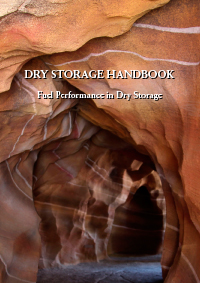Interim Dry Storage – Creep (ZIRAT29/IZNA24)
Dry storage of commercial spent nuclear fuel (CSNF) is a well-established technology. As of 2024, spent nuclear fuel elements from commercial power plants and from research reactors have been stored in a dry state for nearly 40 years and 50 years, respectively. The overarching goal is preventing CSNF degradation that would result in multiple fuel rod failures during dry storage, at least through post-storage retrieval for reprocessing or placement and sealing in a container at a final disposal repository. Since performance with dry storage has already been shown acceptable for tens of years, the emphasis is presently on any changes that may occur during extensions of the dry-storage time periods to a hundred years. This Special Topic Report addresses Thermal Creep. It is shown that thermal creep under normal conditions of storage is unlikely to result in cladding rupture for present, as well as later.





